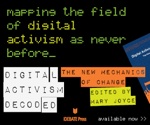We want to welcome Emily Anderson to the Other Side Group. Emily will be working with us over the summer as a content producer. She will be posting on Ad Your Comments Here throughout the summer, and we look forward to hearing about her thoughts on the field. For more information, check out her full bio.
Below are her initial thoughts as she begins her work with us.
Over lunch yesterday, I was talking to my friend about how companies, organizations, or brands market themselves on Facebook. Advertising is prevalent on the site, appearing in the margins as you shift from page to page.
What frequently goes unnoticed to the average user, who is often engrossed in messaging or picture uploads, is the very tailored approach to marketing. As a vegetarian, avid runner, and former intern for a non-profit, often the small advertisements that appear when I am logged in are in support of walks or runs for different non-profit organizations, animal welfare, animal and environment friendly apparel, or even work-out routines.
Interestingly, my friend was an Art History Major in college and is currently an Art Education Masters student. On Facebook, she often views advertisements for art museums or art supply stores. The images are very systematically displayed, and tailored to the profile of each user. Is it invasive or non-invasive to take information from a personal profile in order to display specific images?
In a recent blog, Sarah Perez at ReadWriteWeb writes that pictures have been used as a new form of marketing on Facebook. Users will be notified that they have been tagged in a photo, when really they have been tagged to a new product or service. I think that this is far too invasive because Facebook users are individually contacted, and probably inconvenienced for the purpose of marketing. However, a recent article at Duct Tape Marketing advocates tailored marketing via Facebook because all companies, local or national, can target specific locations, genders, or age groups, etc.
Ultimately, I see no problem with using information from one’s publicly displayed profile if images are merely appearing on the margins of the screen, giving the user an option whether to engage with those images. This approach helps raise awareness for all types of causes and products, without deeply inconveniencing or irritating Facebookers who use the site as a means of keeping up with friends.
I do wonder though, if marketers will abuse Facebook as Sarah Perez notes, or respect the space of individuals.









